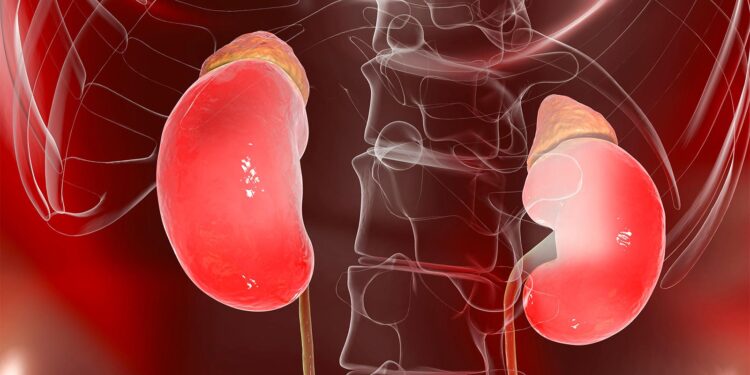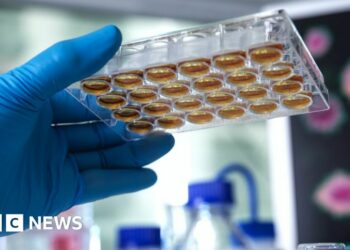SGLT2 inhibitors significantly lowered the risk of death, major adverse kidney events (MAKE), and major adverse cardiovascular events (MACE) in people with type 2 diabetes and acute kidney disease, according to a cohort study.
Compared with nonusers, SGLT2 inhibitor users had a 5-year all-cause mortality rate of 9.0% versus 18.7%, which translated into a 31% lower risk of mortality (adjusted HR 0.69, 95% CI 0.62-0.77) over a median 2.3-year follow-up, Vin-Cent Wu, PhD, of the National Taiwan University Hospital in Taipei, and colleagues found.
SGLT2 users also had significantly lower rates for MAKE (9.5% vs 21%) and MACE (13.5% vs 25.8%), which yielded 38% (aHR 0.62, 95% CI 0.56-0.69) and 25% lower risks (aHR 0.75, 95% CI 0.65-0.88), respectively, the researchers noted in JAMA Network Open.
“Given that the current management of acute kidney disease primarily relies on conservative approaches, such as monitoring, medication adjustments, and minimizing kidney-stressing procedures or treatments, there has been a notable absence of targeted pharmacotherapy to offer protection to these patients,” Wu told MedPage Today. He added that this class of drugs has already been well-established to slow kidney function decline and the risk of death in those with chronic kidney disease. At the moment, a few FDA approved SGLT2 inhibitors have diabetes, kidney, and cardiovascular protection indications, including empagliflozin (Jardiance), dapagliflozin (Farxiga), and canagliflozin (Invokana).
The current findings add to the argument that this medication class also holds benefits for patients with acute kidney disease, said Wu. “Given the potential contribution of acute kidney disease to the rise in the burdens of MACEs and MAKEs, it is crucial for clinicians to consider using SGLT2 inhibitors to address this growing public health concern.”
Researchers identified 230,366 patients with acute kidney disease (average age 67.1) from the TriNetX global healthcare database who were admitted to targeted healthcare organizations. Among this patient population, only 5,319 (2.3%) were on an SGLT2 inhibitor, which Wu called a “relatively low” number, particularly given the fact that current guidelines recommend the use of SGLT2 inhibitors in patients with existing kidney disease. “This underscores the need for increased awareness and greater consideration of this critical issue in clinical decision-making,” he pointed out.
Inclusion criteria included a type 2 diabetes diagnosis and having received dialysis during hospitalization. Those who received postdischarge redialysis or who died within 3 months were excluded. MAKEs were defined as redialysis, dialysis dependence, or mortality, and MACEs were defined as cerebral infarction, hemorrhagic stroke, acute myocardial infarction, cardiogenic shock, or mortality.
At baseline, people on SGLT2 inhibitors had slightly higher average HbA1c levels (8.4% vs 7.9%), eGFR (76.9 vs 73.9 mL/min/1.73m2), and BMI (32.3 vs 30.4). More SGLT2 users were also on angiotensin-converting enzyme inhibitors and angiotensin receptor blockers.
Despite the many protective benefits of SGLT2 inhibitors in this population, the researchers did find a higher risk for diabetic ketoacidosis (AHR 1.36, 95% CI 1.00-1.85) and osteoporotic fractures (AHR 1.39, 95% CI 1.04-1.85).
When the researchers looked at specific subgroups, they found the reduction in mortality risk was seen regardless of whether patients were also on insulin, renin-angiotensin aldosterone system blockers, or diuretics. Patients with more advanced kidney disease, no hypertension, and those not taking other diabetic agents had greater reduction of mortality and MAKE risk.
When discussing the thinking behind this study, Wu explained that this group recently conducted a network meta-analysis and found that the use of empagliflozin or dapagliflozin yielded superior renal protection in patients with diabetes and also significantly reduced the risk of acute kidney injury. “The incidence of acute kidney disease following acute kidney injury is approximately 33.6% and it can occur without identifiable preceding acute kidney injury. The development of acute kidney disease is associated with increased risks of chronic kidney disease, dialysis, and mortality.”
The researchers noted that most patients included were white, which could limit how generalizable the findings are to other racial and ethnic groups. Also, the baseline differences in SGLT2 users’ comorbidities and medication use also may have biased the findings.
Disclosures
The study was supported by grants from the Chang Gung Memorial Foundation, Ministry of Science and Technology in Taiwan, and Taiwanese Ministry of Health and Welfare.
Wu and co-authors reported no disclosures.
Primary Source
JAMA Network Open
Source Reference: Pan H-C, et al “Sodium-glucose cotransport protein 2 inhibitors in patients with type 2 diabetes and acute kidney disease” JAMA Netw Open 2023; DOI: 10.1001/jamanetworkopen.2023.50050.
Source link : https://www.medpagetoday.com/nephrology/diabetes/108118
Author :
Publish date : 2024-01-04 10:54:33
Copyright for syndicated content belongs to the linked Source.


![author['full_name']](../../wp-content/uploads/2024/01/In-Acute-Kidney-Disease-SGLT2-inhibitors-Were-All-Around-Protective.jpg)












